''A World Without Dairy''
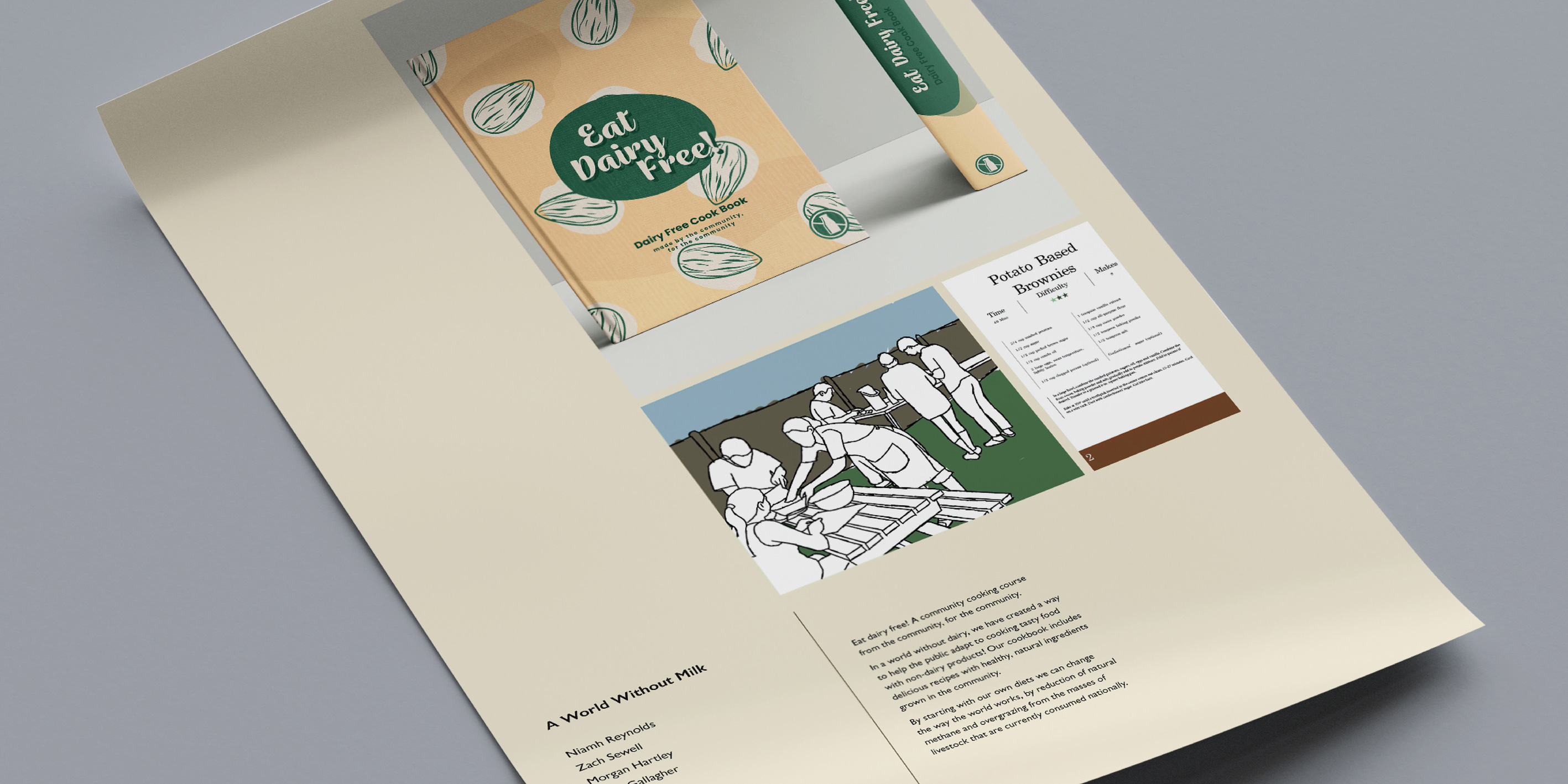
The Challenge
How can we live in a world without dairy within the context of the Climate Emergency and finite resources?
What if we lost a key object in the world today? How could we survive in a world without dairy? Working in a team, we needed to address the challenges and issues to develop concepts that can bring the world to a more desirable future.
The Mindmap
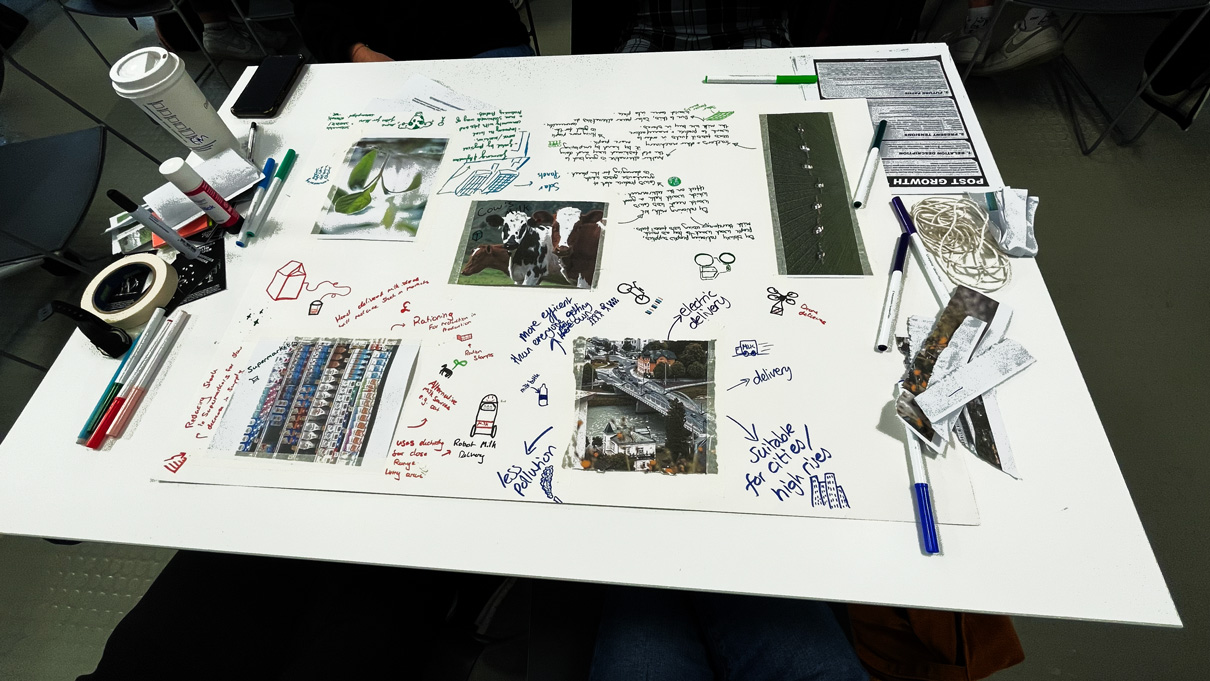
To further develop our ideas, we used images that we thought were relevant to our topic and made a mind map. This helped us to clearly see all our ideas and work as a team to share our ideas about this project. One thing that we found with this project was that a lot of the issues surrounding cow’s milk have already been thought of so we had to think of more ideas that aren’t accessible at this point but they could be options for the future, when the technology is more developed.
Idea Generation
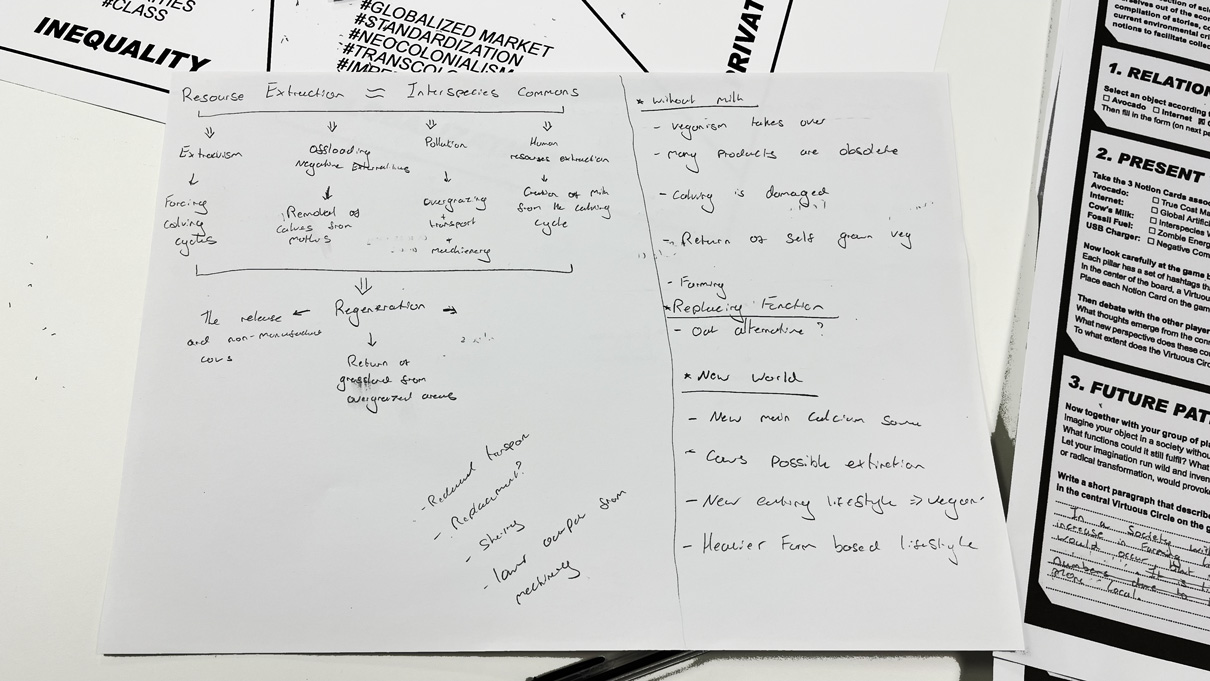
After we created our mind map as a team, we did some further research on milk to help us to gather more understanding of the issues surrounding this topic. We explored a variety of subjects within his research including resource extraction, regeneration, and a new world without milk.
Design Museum
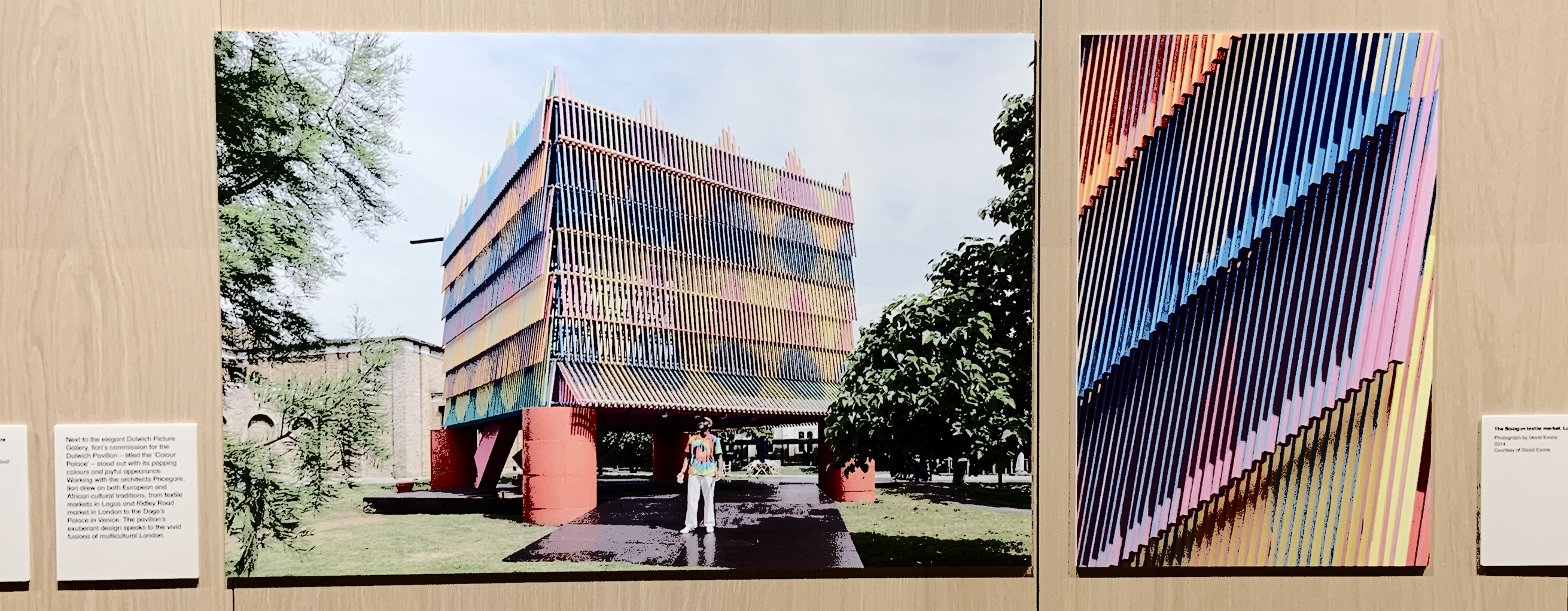
When visiting the Design Museum in London, I looked specifically at sections of the museum that focused on community. These felt to be the most relevant to this project as it gave me some ideas on how to go about tackling my project on cow’s milk.
Initial experiments
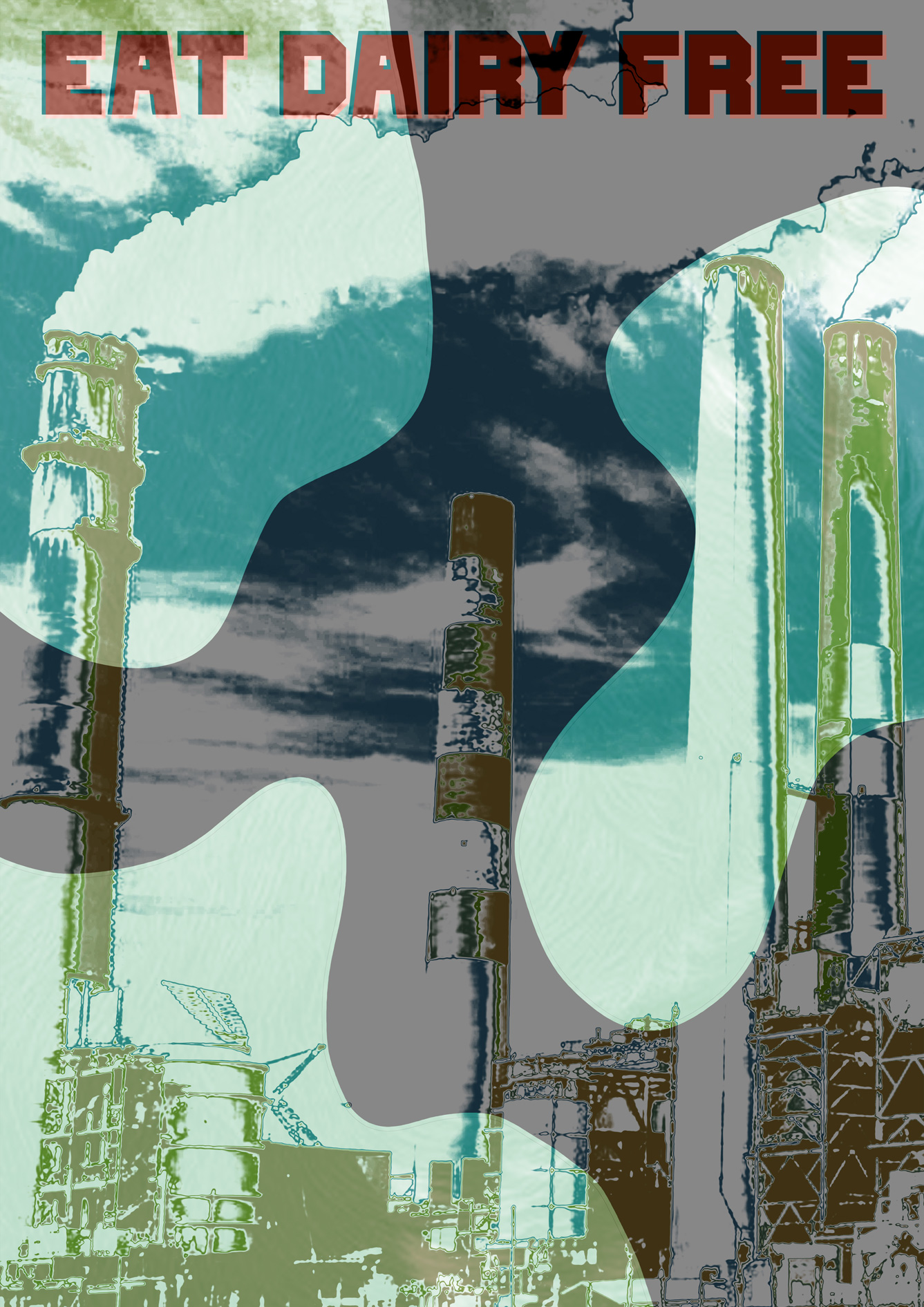
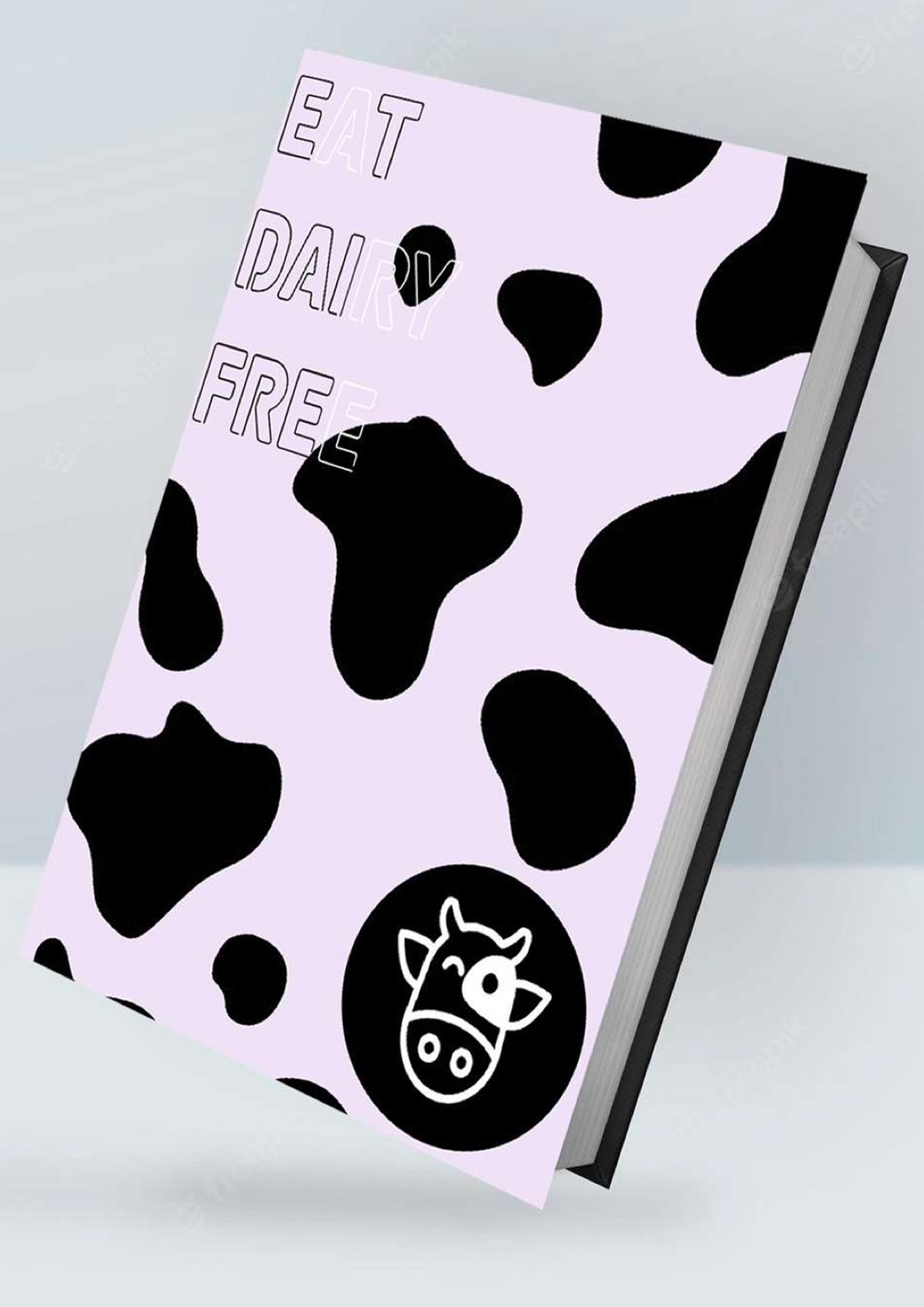
I created an initial experiment of a potential poster design for our cow’s milk cause. I experimented with colour and blending options as well as typography that best went with the topic. My team also came up with a potential book cover design as we were experimenting with creating a cookbook with milk free recipes.
Colour schemes
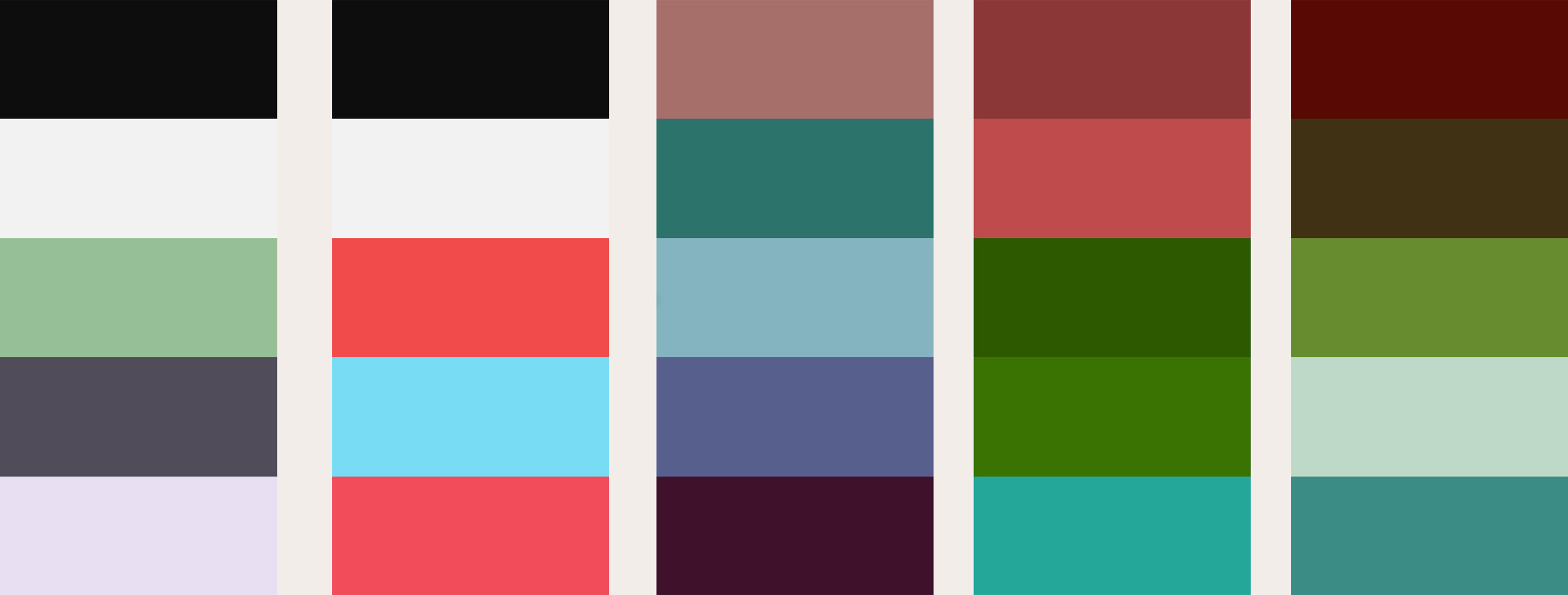
As a team, we experimented with a few different colour schemes for this project. We put them all together and came to the decision to use green, red and blue as these had connotations that link strongly with our project as well as using other colours such as black and white.
Wider identity
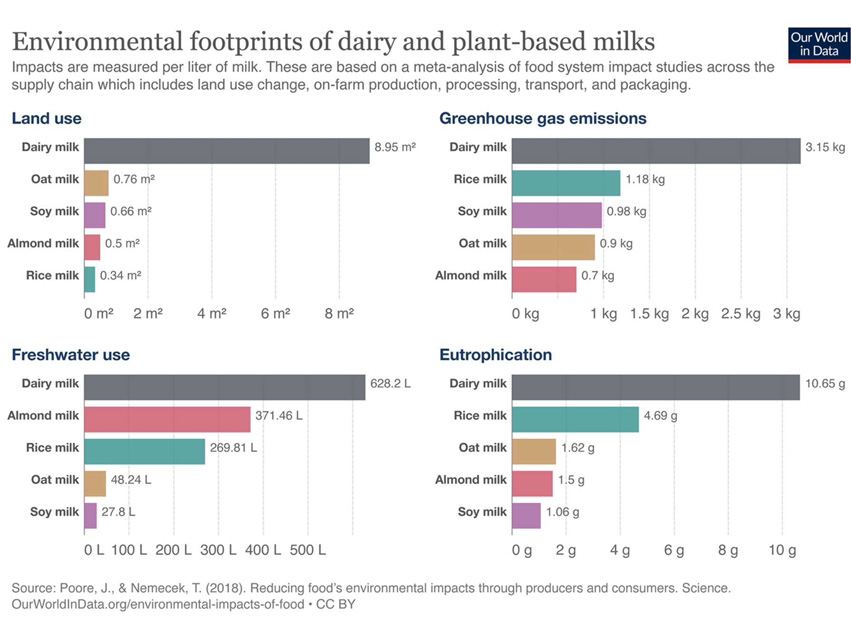
When looking at the wider identity of the issues we were attempting to solve, we found some graphs for land use, greenhouse gas emissions, freshwater use and eutrophication that showed the environmental footprints of dairy and plant-based milks. We used these graphs to help us show the damage that cow’s milk can have on the planet and what alternatives were best to use instead.
Initial presentation
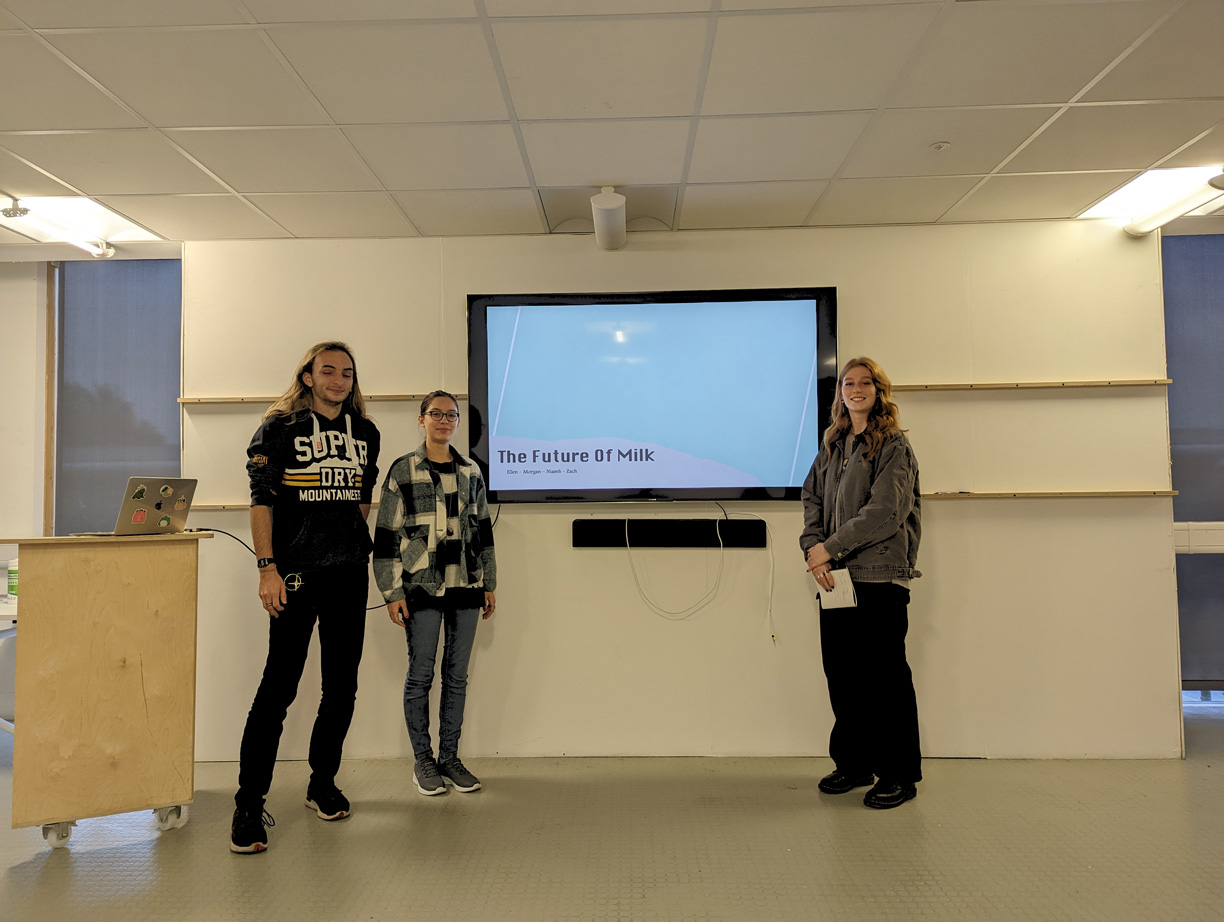
For our initial presentation, we introduced our key insights into cow’s milk and its production as well as the effect it takes on a planet. We also showed our initial ideas in or presentation to try and create a journey for the tutors and our peers to follow our thought process through and stated the problems we had found along the way. We presented our 3 main ideas to help solve these problems and explained our next steps.
A key piece of advice that we were given was to think about community events instead of physical things to produce. We thought that this was a very interesting concept to explore for our next steps because it made us start to think outside the box more with our ideas.
Final presentation

For our final presentation, we had more refined due to our adjustments that stemmed from our feedback from our first presentation the week before. In our feedback, we were told that we had nice branding and they loved our development of our community idea from the initial presentation and that we were promoting cow milk alternatives because this showed that we were trying to solve the problem effectively.
They suggested that we use a different design point to the cow print as our current designs made our project seem very pro cow’s milk which we wanted to avoid. The tutors then gave us the idea to make our own recipes for the dairy free cookbook and make then for our exhibition so people could have samples.
Final exhibition
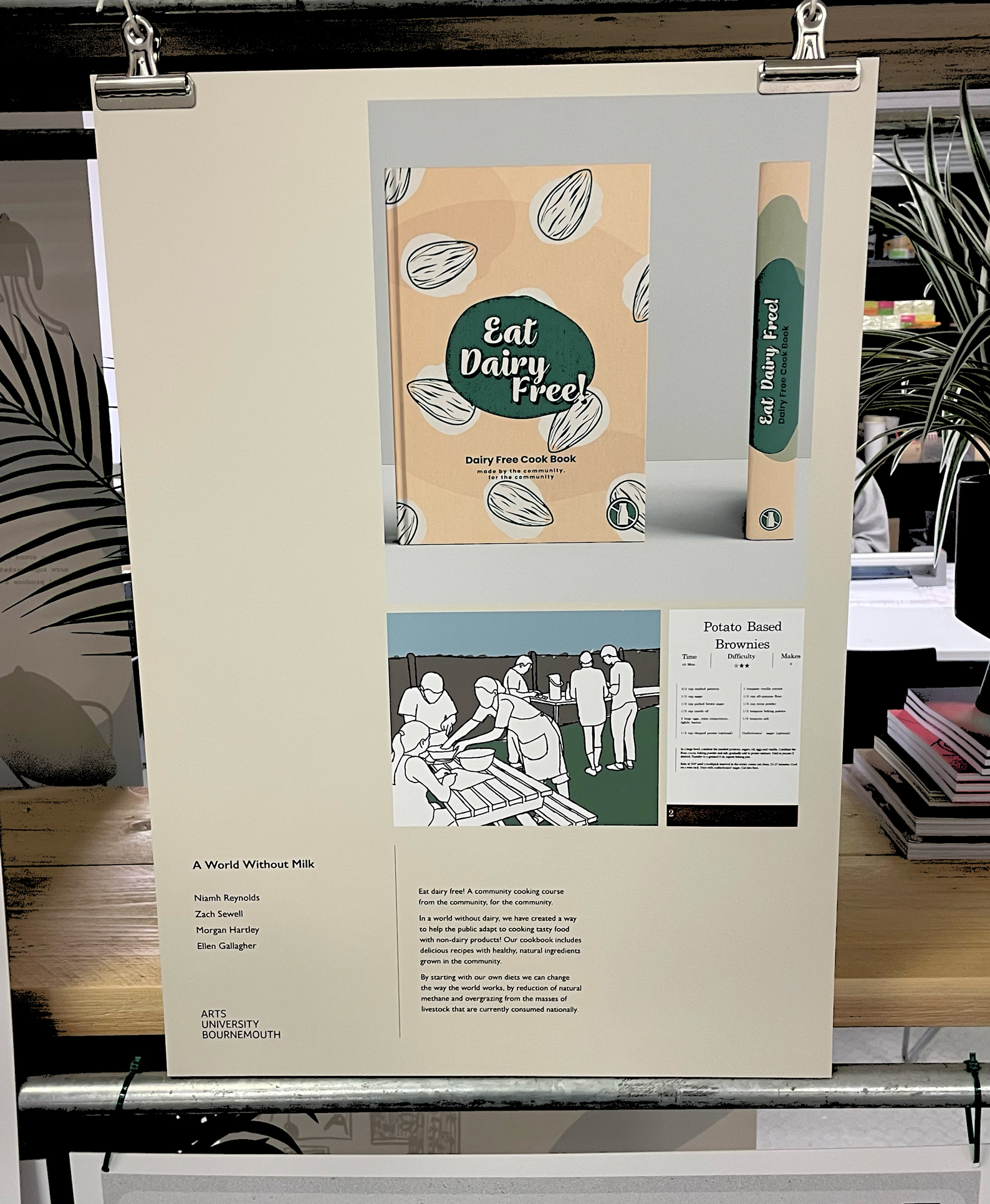
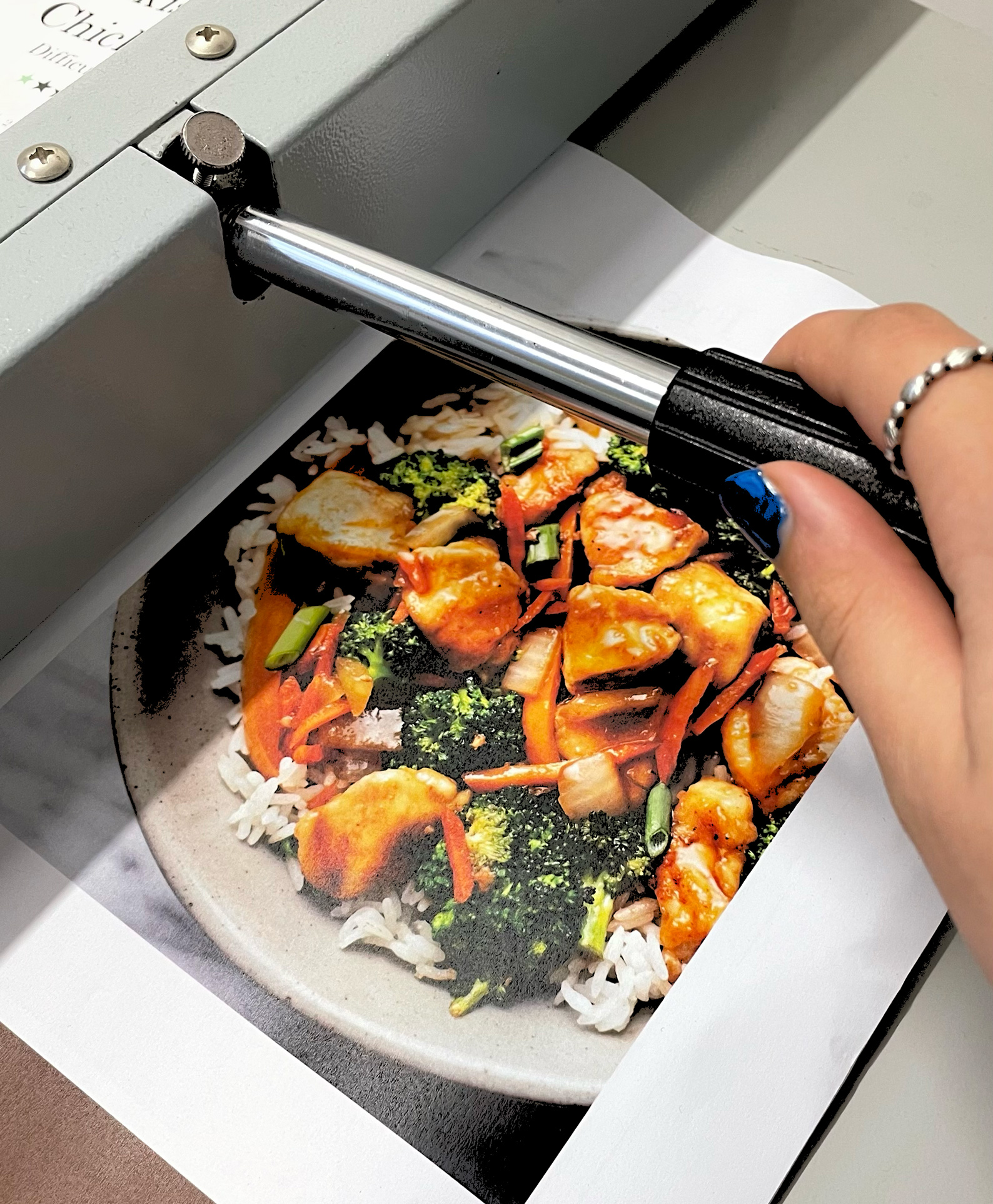
For our final exhibition, one of my teammates and I took it upon ourselves to print out a copy of our cookbook to ensure that it looked good in person. We used the creaser to accurately ensure that the book was folded exactly in half before using the guillotine to cut it down to size. To finish off our mock-up, we used the long-armed stapler to bind the book pages together which we thought was simple and effective.
We then printed out our exhibition poster and hung it in the studio next to our cookbook and our hand-baked potato-based brownies, which disappeared in seconds!
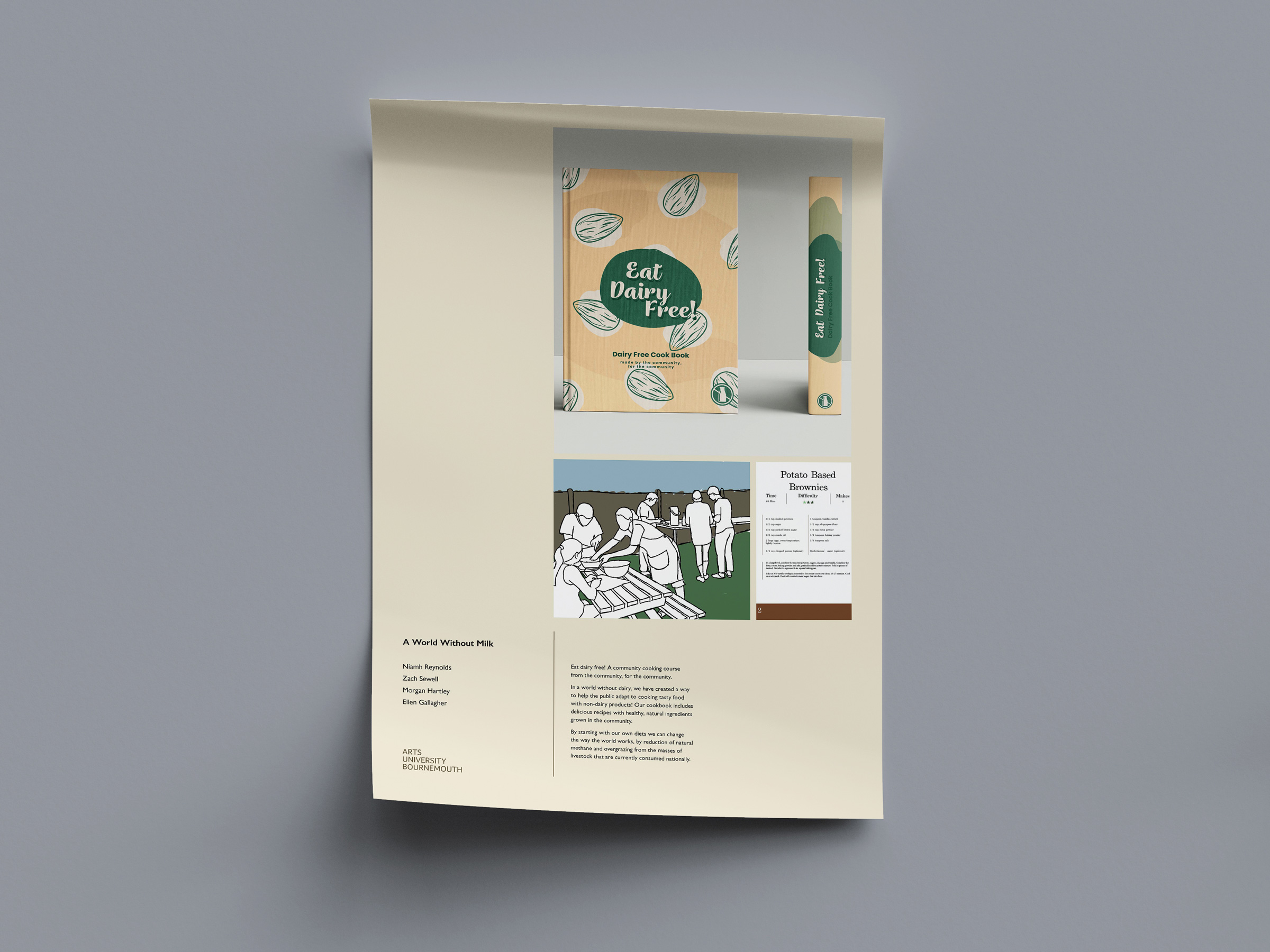
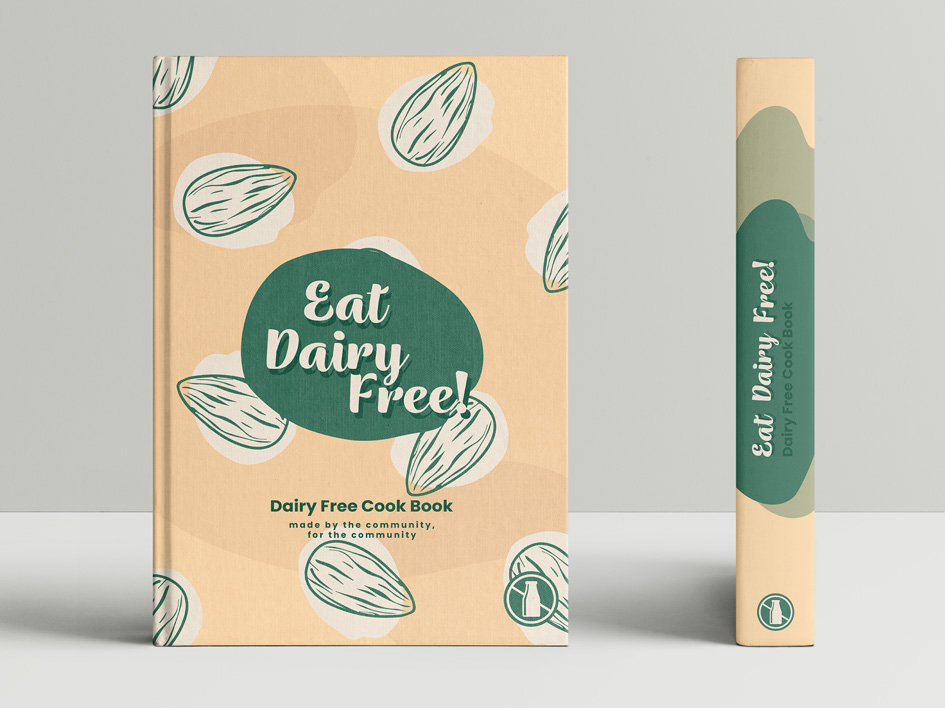
Layout workshop
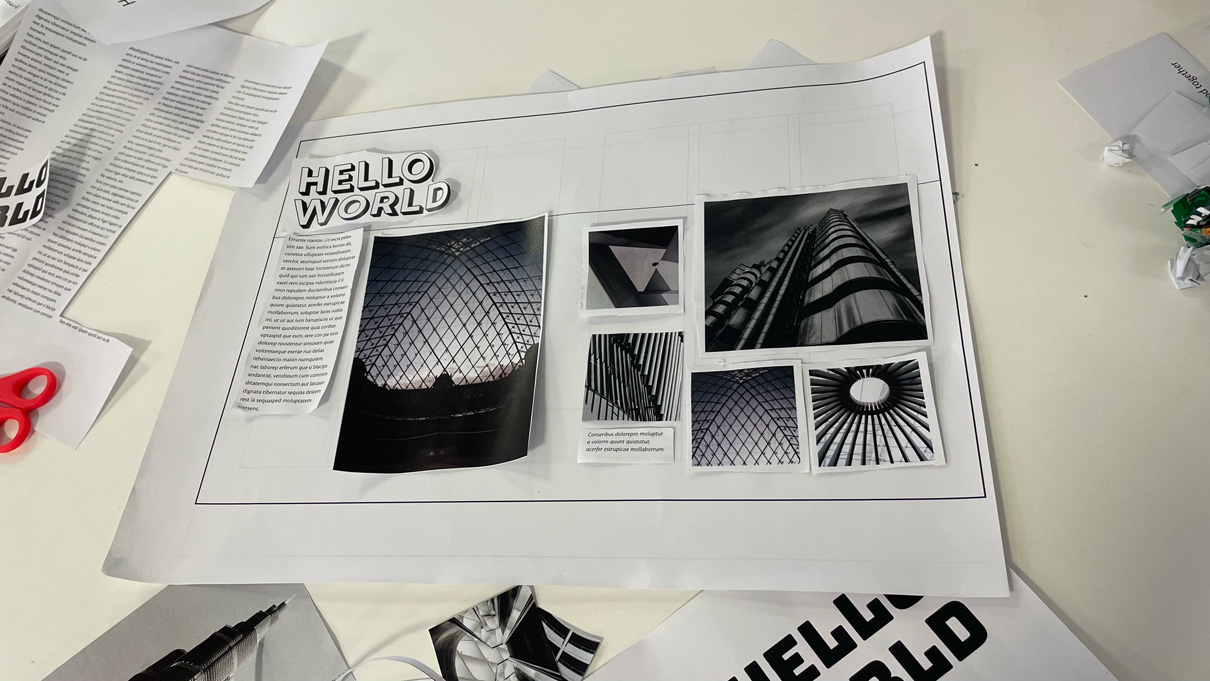
To help us create our process books on this project, a tutor put on a layout workshop to get is thinking about how to create memorable and professional layouts within a book. I found this workshop very useful because I had never worked with hang lines before on InDesign and I learnt that they were the key to a successful looking process book.
Colour workshop
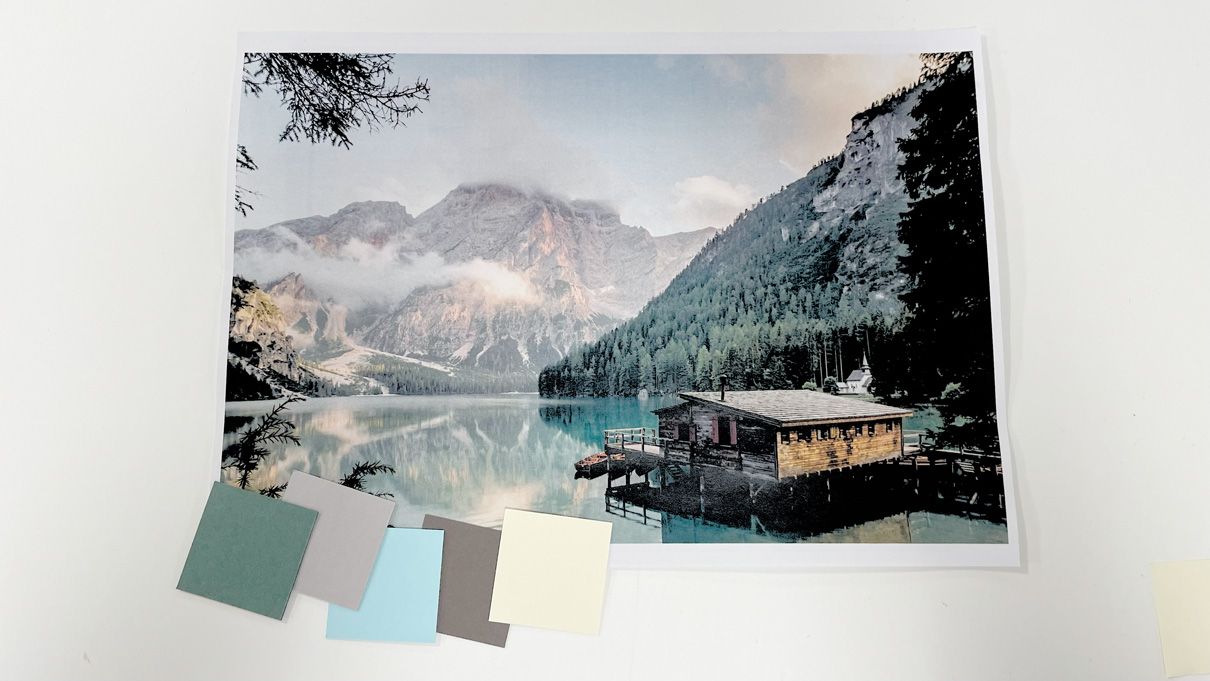
The colour workshop was useful towards me creating my process book because it got me thinking about colour schemes in more depth than I had in previous projects. We got a refresher on the colour wheel. We re-learnt how important the role that the colour wheel plays in design is and how to use it effectively.
This workshop helped me to select the colour scheme for my process book because I thought about what colours I had used in my project and I used those as a jumpstart for my colour scheme which I wouldn’t have thought to do before this workshop.
Flatplan workshop

Before this workshop, I took it upon myself to create a flat plan for my process book as I wanted to start my book sooner to ensure that I had plenty of time to work on it. This workshop helped me to think more clearly about what to include in my process book and allowed me to visualise it easier. This helped me to see book design in more depth than I had on previous book projects and sparked my interest in print design.
Bindery workshop
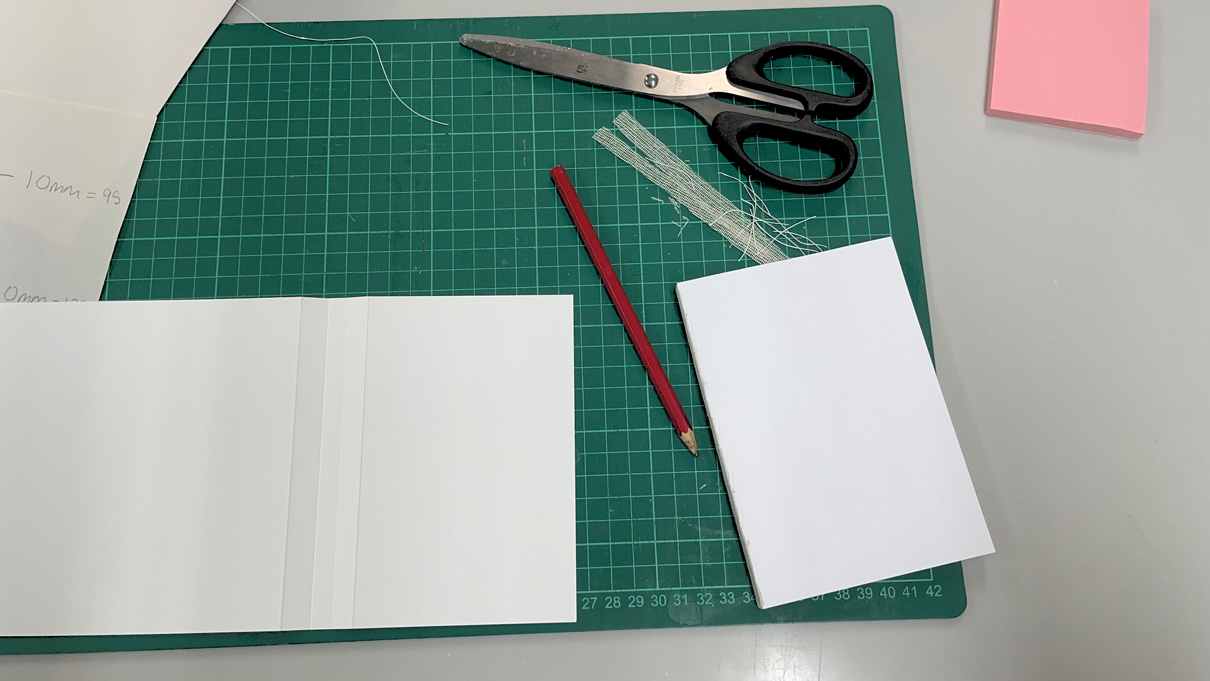
To further my knowledge of different methods of book binding, I decided to sign up for a perfect book binding workshop in the bindery on campus. I found this very useful for this project because I wanted to try my hand at binding my book professionally as book design is an area that I am interested in for my future. After this workshop, I decided that this is the way that I would want to bind my final process book because I really liked how clean and professional the final book looked.

Project reflection
One strength for this project is that it has the potential to help slow down climate change worldwide and can have a positive effect on cows long-term. However, our concept relies on the communities being able to create our vision as well as wanting to.
One thing that I have learnt in this project is to focus more on the ideas stage of the brief and to learn how to break those original thoughts into more thoughtful ideas that think more outside the box. I need to learn to take my time and develop my projects more carefully and at a slower yet more concise way. The work that both I and my team produced was good because it used a colour scheme and had a great concept however, I think that it could have been improved more by having more consistency throughout the entire process.
Throughout this project, my team and I explored quite a range of ideas including delivery services, solar panel production methods, rationing, a cookbook and a community event. We mostly tested these ideas through group discussion but one problem that kept coming up within these discussions were that some of our ideas had already been thought of or done so we needed to come up with more original ideas. However, I felt that I could have used my time more effectively throughout this project by developing more ideas and potentially making models to show our ideas clearer with inspiration from the models we saw in our trip to the Design Museum.
One area that I personally feel that I need to work on for the next project is to be able to manage my time better because this project felt a little confusing as to what we were supposed to be working on sometimes.
Process book reflection
When I started thinking about my process book, I began with deciding what style I wanted to create my process book in. I decided that I would like to keep my pages white and just add splashes of colour into my book because this felt like the best visual outcome for this project.
I chose the title ‘A World without Dairy’ because it felt very personal to our project about cow’s milk. It also linked to our outcome design of our cookbook and community event because we focused those projects down to going dairy-free. I chose the cover art image for the front and back covers because I felt that it has connotations of the inside of a barn as well as having subtle links to production which we focused on at the start of the project.
For my content, I enjoyed bringing all the work together into one process book because I enjoyed looking back on the project and reflecting on each area and what it taught me throughout. I think that my organisation within this process book was very good because I didn’t feel overwhelmed whilst creating the book. I chose to use 5 colours in my colour scheme for my book. I did this because it made the chapters easy to separate visually which was a key design element that I wanted my book to have. Next time, in doing a process book, I would like to experiment more with different layouts and styles of design as I felt that I was very set on the look of my book before beginning the project.
I decided to use my new perfect binding print knowledge to get my book printed out professionally so that I can show physical objects to future employers to gain job roles and internships in the future. Overall, I think this was a successful project and I have learnt a lot about both the designing and the printing elements of book design.